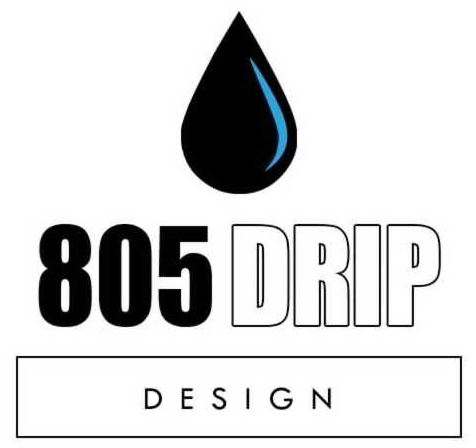Drip systems deliver water right to the root zone — not into the air. If you’re still using overspray on planters or narrow side yards, you’re likely watering hardscape and feeding weeds. A professionally designed drip system gives plants the slow, steady moisture they need while cutting waste, runoff, and maintenance.
Why Switch to Drip?
Up to 30–60% water savings compared to spray in beds and narrow spaces
Healthier plants with consistent soil moisture (fewer disease and stress swings)
Less runoff & erosion— especially on slopes and DG paths
Fewer weeds because bare areas aren’t getting sprinkled
Rebate-friendly in many SoCal water districts (check local programs)
Where Drip Shines
Planter beds, parkways, and foundation plantings
Narrow side yards and parkways where spray overshoots
Slopes and berms where water needs time to soak in
Tree rings and shrub groups with different water needs
Renovations replacing lawn with drought-tolerant plants
Our Pro Installation Process
Site Walk & Water Audit
We map plant groupings (hydrozones), measure pressure/flow, and note sun, soil, and slope.Design & Zoning
Separate valves for high/low water-use plants. We size the system to match your meter and maintain correct operating pressure.Filtration & Pressure Regulation
Every drip zone gets filtration and a pressure regulator (typically 20–30 PSI) to keep emitters consistent and clog-free.Quality Materials
UV-rated dripline (with built-in emitters) or point-source emitters, swing elbows at risers, and durable fittings.Smart Controller Setup
We program seasonal schedules, add rain/freeze sensors, and (optionally) flow monitoring for leak alerts.Coverage Test & Walkthrough
We verify distribution, set mulch depths, label valves, and show you how to run seasonal adjustments.
Design Details That Matter
Hydrozoning: Don’t water succulents like roses. Separate valves = healthier plants + lower bills.
Emitter Choices:
Point-source (1–4 GPH) for trees/shrubs with specific needs
Inline dripline (0.4–0.9 GPH per emitter, 12–18″ spacing) for beds and long runs
Mulch: 2–3″ of mulch locks in moisture and shields tubing from UV.
Flush Valves & Air Relief: Keeps debris out and prevents suction of soil back into lines.
Backflow & Code: We install per local codes to protect your home’s water supply.
Common Mistakes (and How We Avoid Them)
No pressure regulation: Leads to blown fittings and uneven watering.
Too few emitters per plant: Roots grow where the water is; large plants need multiple wetting points.
Mixed plant types on one valve: Over/under-watering is guaranteed.
Burying drip too deep: Hard to service; we keep it just under mulch, not 6″ down.
Skipping filtration: Clogs follow — we filter every zone.
Maintenance & Care
Inspect filters and flush ends seasonally (we can set reminders).
Refresh mulch annually to maintain moisture and suppress weeds.
Update schedules with the seasons or enable smart controller weather adjustments.
Watch for gophers or edging damage; we leave a simple repair kit and show you quick fixes.
What It Costs & Timeline
Typical bed conversions: Priced per zone/plant density/materials.
Larger estates / multiple hydrozones: More valves, more control (and better long-term savings).
Timeline: 1–3 days for standard conversions; larger designs may span a week including trenching, testing, and clean-up.
Pro tip: Converting spray beds to drip often qualifies for rebates. We’ll provide documentation and photos after install so you can submit quickly.
Ready to Stop Watering the Sidewalk?
We design and install drip systems that make landscapes greener and bills lighter — with clean valves, smart controls, and tidy mulch finishes. Book a water-wise assessment and we’ll map your zones, show projected savings, and give you a clear proposal.
Is drip better than sprinklers?
For planters, yes. Drip targets roots, reduces evaporation and runoff, and encourages deeper root growth.
Can drip water lawns?
Drip is best for beds, shrubs, and trees. Lawns still perform best with high-efficiency rotary nozzles or subsurface drip designed specifically for turf.
How often should I run drip?
Less often, longer cycles. For example, 2–3 days per week with deep soaks, adjusted seasonally and by plant type/soil.
Will drip clog?
With zone filtration, pressure regulation, and periodic flushing, clogs are rare. We also spec emitters designed to resist debris.
Do I need a smart controller?
Not required, but recommended. Weather-based adjustments and flow sensing can reduce waste and catch leaks early.
